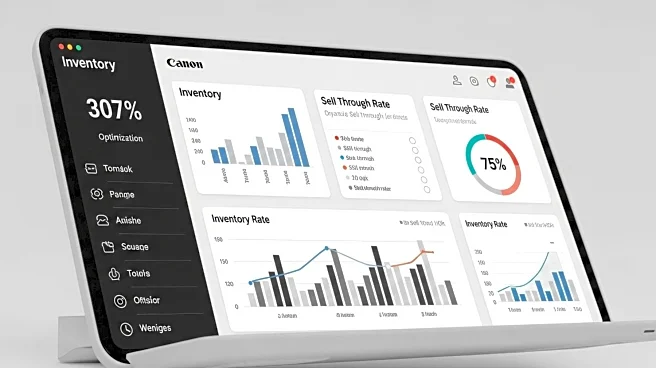What is the story about?
What's Happening?
Shopify has introduced a comprehensive guide on calculating and improving sell-through rates (STR), a key performance indicator for retail businesses. The sell-through rate measures the percentage of inventory sold in relation to the number of units received from manufacturers during a specific period. This metric is crucial for understanding product demand, optimizing inventory, and enhancing profitability. Shopify's platform offers tools to manage inventory across various sales channels, including online and in-person, and provides insights into sales trends and customer preferences. The guide emphasizes the importance of maintaining a high STR, typically at or above 80%, to ensure efficient inventory management and reduce carrying costs.
Why It's Important?
The sell-through rate is a critical metric for retail businesses as it directly impacts profitability and operational efficiency. A high STR indicates strong product demand and helps businesses avoid overstocking, which can lead to increased storage costs and potential losses from unsold inventory. By leveraging STR insights, retailers can optimize their supply chain, improve supplier relationships, and enhance marketing campaign effectiveness. This metric also aids in financial forecasting and cash flow management, allowing businesses to make informed decisions about inventory purchases and promotions. As e-commerce continues to grow, tools like Shopify's STR guide are essential for businesses to remain competitive and responsive to market demands.
What's Next?
Retailers using Shopify can expect continued enhancements in inventory management tools, including more advanced analytics and forecasting capabilities. As businesses adapt to changing consumer behaviors and market conditions, the ability to accurately predict demand and manage inventory will become increasingly important. Shopify's platform may introduce additional features to support strategic promotions, product bundling, and targeted marketing efforts, helping retailers maximize their sell-through rates and overall sales performance. The integration of AI-driven planning and real-time data analysis could further refine inventory strategies, ensuring that businesses are well-prepared for seasonal fluctuations and unexpected disruptions.
Beyond the Headlines
The focus on sell-through rates highlights the growing importance of data-driven decision-making in retail. As businesses strive to meet consumer expectations and reduce operational costs, the ability to analyze and act on sales data becomes a competitive advantage. Ethical considerations may arise as retailers balance the need for promotions and discounts with maintaining brand integrity and profit margins. Additionally, the shift towards more personalized marketing and inventory strategies reflects broader trends in consumer behavior, where customization and responsiveness are key to building customer loyalty and driving sales.
AI Generated Content
Do you find this article useful?













